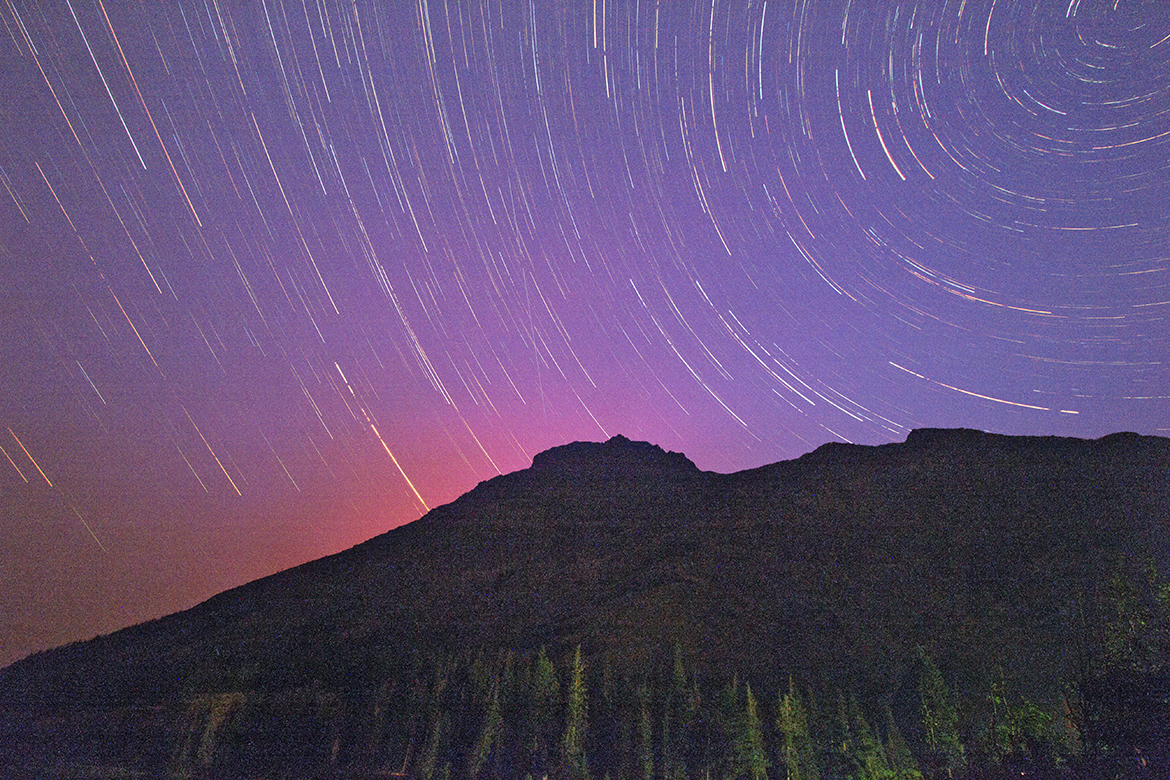6.1 Forest Fire Crater Haze
Though it doesn’t seem so from the maps, Crater Lake is not an easily accessible park. It is tucked away in a zone straddling forest and desert, and only a few roads provide access.
I stopped in the town of Roseburg, the exit point from the I5 freeway to start the blue-highways route to Crater Lake. This was the last town of a size that might have an adequate camera store. I needed a cable release to replace one that had failed. A cable release, the mechanism that provides long duration exposures by keeping the shutter open, is essential for astrophotography. It works by using a flexible wire inside a sleeve. One end has a pushbutton plunger that is used to push the sliding wire down the sleeve, acting as a “finger extender” to trip the shutter. This allows you to take a picture without actually touching the camera with your shaky hands. When the camera is set to “B” (a reference to the now obsolete flash bulb-mode), the shutter remains open for as long as the cable is pushed in. For really long exposures, there is a convenient feature on the cable release that lets you lock it in place, allowing you to walk away from the whole setup while the shutter remains open. Come back in an hour and unlock it to finish the exposure.
Continue reading →

